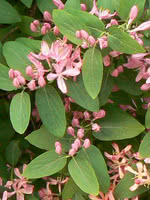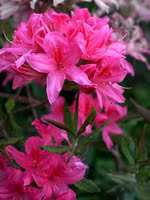Mon-Fri 9am - 5pm Mountain time
Twining Honeysuckle vs Rosy Lights Rhododendron (Azalea)
Lonicera dioica
Rhododendron x Rosy Lights
CUSTOM GROW
CUSTOM GROW
Twining Honeysuckle is a vine native to the forests of Canada and the United States.
It can often be found winding up the bark of large trees or spreading out as a ground cover where no supports are present. You will love the attractive, yellow-orange flowers with pink centers which turn into red, inedible berries.
Consider Twining Honeysuckle when trying to achieve a natural, spreading, unkempt look for your garden.
Rosy Lights Rhododendron is the next flowering, deciduous shrub you need in your garden. It is incredibly cold hardy and produces fragrant, bright pink blooms in late spring. Pruning is recommended after the flowers are finished to control the size and shape of this shrub.
Try Rosy Lights Rhododendron when planning your next hedge/screen, or plant it on its own as a striking accent plant. Part of the Northern Lights Series.
Twining Honeysuckle Quick Facts
Rosy Lights Rhododendron (Azalea) Quick Facts
Toxicity: All parts of a rhododendron bush, including the leaves, stems and blooms, are toxic to cats, dogs, and horses.

